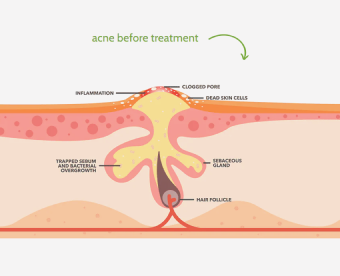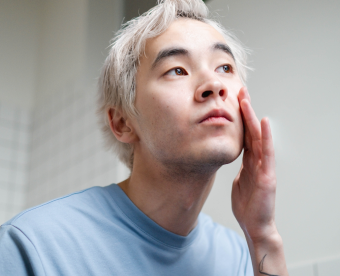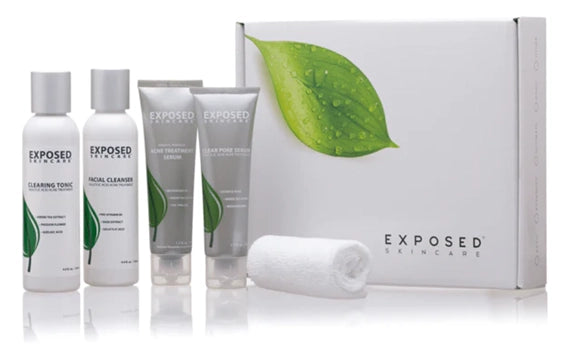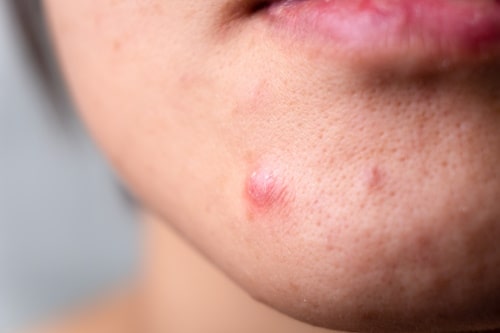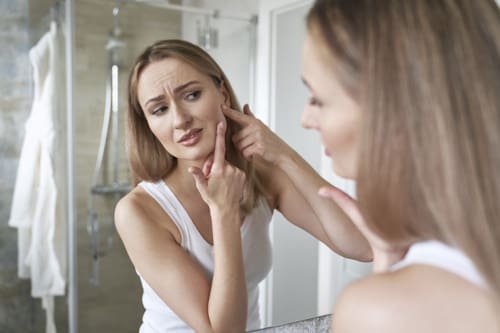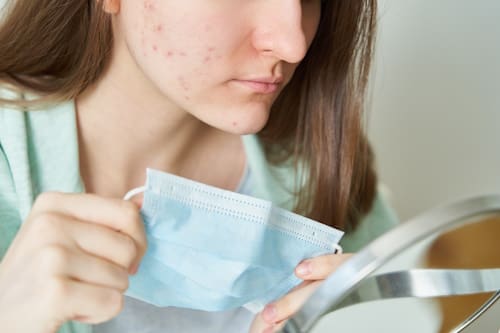Acne, a common skin condition, affects millions of people worldwide. With so many treatments available, finding the most effective solution for your skin is essential.
One such potent remedy is clindamycin for acne. This blog post will dive into the science behind clindamycin, how it works, potential side effects, and frequently asked questions about its use. We also suggest a safer, more effective alternative treatment option.
Also read: How to choose the best acne treatment
Biggest Take-Aways:
-
Clindamycin is an effective antibiotic for treating acne, targeting bacteria and reducing inflammation.
-
Topical clindamycin can be combined with other acne treatments, such as benzoyl peroxide or retinoids, for enhanced effectiveness.
-
Potential side effects of clindamycin may include skin dryness, redness, and gastrointestinal issues (if taken orally).
-
Exposed Skin Care offers an alternative acne treatment, providing comprehensive skincare without the risks associated with prescription medications.

What is Clindamycin?
Clindamycin is an antibiotic that belongs to the lincosamide class of antibiotics. It primarily treats bacterial infections, such as respiratory tract infections, skin and soft tissue infections, and pelvic inflammatory disease.
Interestingly, clindamycin has also been found to be effective in treating acne, making it a popular choice among dermatologists.
Clindamycin for Acne
Clindamycin is available in various forms, such as oral capsules, topical gels, creams, and lotions. It is typically used topically for acne treatment as a standalone medication or combined with other acne-fighting ingredients like benzoyl peroxide or retinoids.
Clindamycin for Different Acne Severities
Clindamycin is effective in treating a range of acne severities, including moderate inflammatory acne and severe acne breakouts.
Topical clindamycin is usually the preferred treatment method for mild to moderate acne. In cases of severe acne, particularly acne vulgaris, oral antibiotics may be prescribed alongside topical acne treatments to enhance their effectiveness.
It is important to consult with a dermatologist to determine the best course of action for treating severe acne.
How Does Clindamycin Work for Acne?
Antibacterial Action
Acne is primarily caused by the overgrowth of the bacteria Propionibacterium acnes (P. acnes) in hair follicles. Clindamycin works by inhibiting bacterial protein synthesis, ultimately killing the bacteria and reducing inflammation. By targeting P. acnes, clindamycin helps reduce the formation of acne lesions.
Anti-Inflammatory Properties
Clindamycin has also been shown to possess anti-inflammatory properties, which can be beneficial in treating acne. Inflammation is one of the leading causes of acne, and by reducing inflammation, clindamycin helps prevent the development of acne lesions.
Clindamycin and Benzoyl Peroxide Combination
Clindamycin and benzoyl peroxide is a popular combination in acne treatments. Benzoyl peroxide is a potent antimicrobial agent that works synergistically with clindamycin to effectively eliminate acne-causing bacteria.
When used together, these ingredients help treat acne by targeting the bacteria and reducing inflammation, making them a powerful duo for managing oily skin and acne breakouts.
Potential Side Effects of Clindamycin for Acne
While clindamycin is generally considered safe for acne treatment, some potential side effects may occur, including:
-
Skin dryness
-
Redness
-
Burning or itching sensation
-
Peeling skin
-
Gastrointestinal issues (if taken orally)

Benefits and Limitations of Topical Clindamycin
Topical clindamycin is generally considered a safe and effective topical antibiotic for treating acne. It has several benefits, such as being easy to apply, showing results within a few weeks, and having fewer side effects compared to oral antibiotics.
However, it may not be suitable for all skin types, as some individuals with sensitive skin might experience irritation or other side effects.
Additionally, the risk of antibiotic resistance may increase with prolonged use of acne topical clindamycin. Following your dermatologist's recommendations and using clindamycin as part of a comprehensive acne treatment plan is essential.
Exposed Skin Care: An Alternative to Clindamycin for Acne Treatment
Exposed Skin Care may be the answer if you are looking for an alternative to clindamycin for acne treatment.
With over 20 years of experience and having helped over 400,000 people achieve clear skin, Exposed Skin Care offers a unique, scientifically based formula that combines the best ingredients from both science and nature.
This system provides a spa-quality, prescription-strength skin care experience at an affordable price and without the risks and hassle of regularly visiting a dermatologist.
The Exposed Skin Care system is manufactured in the United States and Canada, ensuring high-quality ingredients and product safety. It is designed to treat acne for both men and women and is effective for teens and adults alike.
The treatment works regardless of your diet or established routines, making it a convenient and accessible solution for various lifestyles.
Exposed Skin Care is a cost-effective alternative to visiting a dermatologist; the system ships right to your door. The treatment involves a simple, twice-daily skin care routine that can be done in the comfort of your own home.
One of the most appealing aspects of Exposed Skin Care is its industry-leading guarantee:
If you do not achieve a reduction in your acne and smoother skin within one year of your purchase, you may return your first Member kit for a full refund (minus any shipping costs).
This unconditional money-back guarantee is a testament to the company's confidence in their product.
Moreover, Exposed Skin Care offers friendly, responsive, and reliable customer support. You can easily reach their team at 1-866-404-7656 for any questions or concerns regarding the treatment.
By choosing Exposed Skin Care as an alternative to clindamycin, you can experience a comprehensive, effective acne treatment that addresses the underlying causes of acne and provides general skin care benefits.
Conclusion
Clindamycin has proven to be a versatile and effective treatment for various severities of acne, including moderate inflammatory acne and severe acne breakouts. As a topical treatment, it targets acne-causing bacteria and reduces inflammation while also helping to remove dead skin cells.
However, in cases of severe acne, dermatologists may prescribe oral antibiotics alongside topical acne medication to enhance the treatment's effectiveness.
It is essential to consult with a dermatologist before starting any acne treatment, as some individuals may experience side effects or an allergic reaction to clindamycin, especially when using the oral form of the medication.
Alternative treatments like Exposed Skin Care are available for those seeking a comprehensive acne solution without the risks associated with prescription medications.
Ultimately, the key to successful acne treatment lies in finding the right combination of medications and skincare practices tailored to your individual needs. By being patient, consistent, and working closely with your dermatologist, you can effectively manage your acne, reduce inflammation, and prevent infected acne from becoming a persistent issue in your life.
FAQ
Q: How long does it take for clindamycin to work on acne?
A: It may take several weeks to see noticeable improvements in your acne after starting clindamycin treatment. It's crucial to be patient and consistent with the application of clindamycin for acne.
Q: Can I use clindamycin with other acne medications?
A: Yes, clindamycin is often combined with other acne treatments, such as benzoyl peroxide or retinoids, to enhance its effectiveness. However, it's essential to consult with a dermatologist to determine the best combination of treatments for your specific acne needs.
Q: Can clindamycin cause antibiotic resistance?
A: Prolonged use of topical antibiotics, including clindamycin, can potentially lead to antibiotic resistance. To minimize this risk, follow your dermatologist's recommendations and using clindamycin as part of a comprehensive acne treatment plan.
Q: Is clindamycin suitable for all skin types?
A: Clindamycin is generally considered safe for most skin types. However, individuals with sensitive skin may experience irritation or other side effects. Always consult with a dermatologist before starting any acne treatment, including clindamycin.

